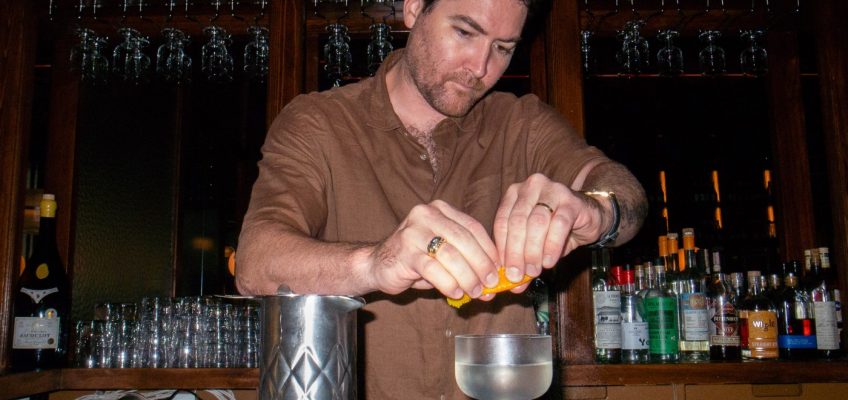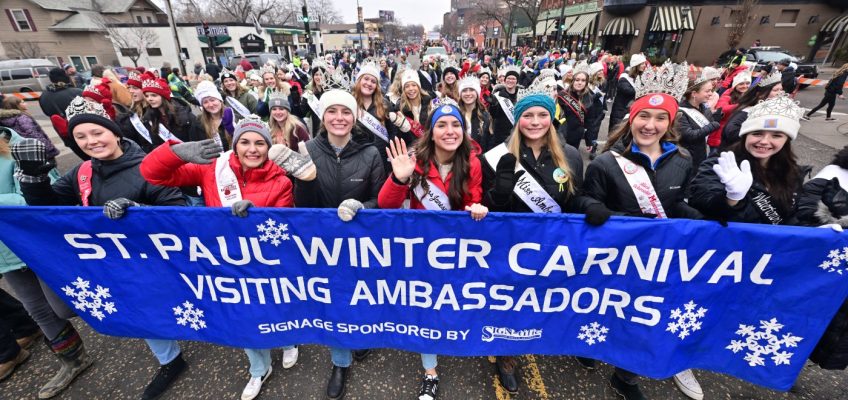Many adjectives have been attached to martinis over the years. Bartenders have plied drinkers with dirty martinis and filthy martinis, smoky martinis and flaming martinis, red-pepper martinis and blue-cheese martinis, breakfast martinis and midnight martinis. Midcentury advertising executives along Madison Avenue were weaned on dry martinis, grew into very dry martinis and graduated to extra dry. Inevitably, this produced a backlash, and in the 1990s it was common to find not just apple martinis but melon martinis, kiwi martinis, lychee martinis and other fruits.
It is safe to say, though, that before Eel Bar opened on the Lower East Side a few months ago, few bartenders had thought it was a good idea to sell something called a wet martini.
Not long ago, wet was the second-worst thing a martini could be. (The worst was, and still is, warm.) The word has never had a strict definition in mixology, but it implied that the bartender had allowed too much vermouth to creep into the glass. It was a synonym for anemic, sloppy, wishy-washy and other traits you don’t want in a martini. And while there was a niche audience for martinis that go heavy on the vermouth, a bar pushing a wet martini would have been like a bakery promoting moldy bread or a deli advertising tainted lunch meat.
At Eel Bar in 2024, though, the name inspires more curiosity than revulsion. Customers have reportedly been ordering them at a brisk clip, not that they don’t have a few questions.
“I do think it’s a conversation starter,” said Nialls Fallon, one of the restaurant’s owners and the person who devised and named the drink.
When asked, bartenders will explain that Eel Bar is inspired by the food and drink of the Basque Country and that the wet martini is a form of what people on the north coast of Spain call vermut preparado — prepared vermouth. Vermouth drinkers in San Sebastián or Bilbao, of whom there are many, are typically asked whether they’d like a little something extra in the drink. Usually, this means splashes of gin and Campari over sweet red Spanish vermouth. (Invariably, vermut preparado is served on the rocks.)
Eel Bar’s wet martini begins instead by blending two clear French vermouths, a dry one from Dolin and a slightly more bitter and herbal variety from Comoz. The vermouth is “prepared” with just as much London dry gin and a few drops of orange bitters. The last touch is a spritz of oil released by snapping a piece of orange peel over the surface.
Lovers of the dry martini sometimes compare it to a slap in the face. The wet martini is more like a facial massage; it doesn’t seem like much at first, but after a few minutes you realize you’ve wanted something like it for a long time.
Astute drinkers will notice that Eel Bar’s wet martini is an elaboration on the Fitty-Fitty poured by the Pegu Club on Houston Street from the night it opened in 2005 until it closed in 2020. The bar’s owner, Audrey Saunders, wasn’t thinking of vermut preparado when she mixed up equal parts gin and dry vermouth, but she was nudged in that direction by her exposure to continental drinking habits when she managed Bemelmans Bar in the Carlyle hotel.
Europeans staying at the hotel would ask for a Martini on the rocks, by which they meant Martini & Rossi dry vermouth. Because so many customers asked for it, Bemelmans always had freshly opened vermouth at a time when most places in New York sold so little of the stuff that it would sit in the well for months, where the vermouth went stale and the bottles were fuzzed over with dust.
Saunders became curious enough to try a Martini & Rossi on the rocks herself, and saw the appeal right away. A short time later, she traveled to London and tasted varieties of vermouth that weren’t sold in the United States.
“I thought, wow, this is kick-ass,” she said. “I need to preach the gospel of vermouth at home.”
This meant fighting decades of vermouth phobia. The stuff had never really recovered from Prohibition.
Most likely, the aversion was partly due to the low quality of the products stocked by the average American bar. But postwar martini fanatics really did a number on vermouth’s reputation, too. A dry martini went from meaning one made with dry vermouth to one made with as little vermouth as possible. Know-it-alls would torment bartenders with fictitious Churchill quotes about observing the vermouth from across the room or “bowing in the direction of France.” Those who allowed vermouth in their martinis at all asked for a quick rinse in the glass — the “in and out” technique.
By 1952, the extra-dry martini had become what C.B. Palmer writing in The New York Times Magazine, called “a mass madness, a cult, a frenzy, a body of folklore, a mystique, an expertise of a sort which may well earn for this decade the name of the Numb (or Glazed) Fifties.“ To this cult, the wet martini was anathema.
When Saunders drew up the drinks list at Pegu Club, she studied bartending guides published before Prohibition, when a dry martini was one made with dry vermouth, not sweet, and 50-50 ratios were the rule. But the Fitty-Fitty wasn’t meant as an exercise in mixological anachronism. “The goal was to get people drinking vermouth again,” she said.
It worked. The Fitty-Fitty and other vermouth-drenched cocktails won converts across the land. The United States, once a fortified-wine backwater, is now the second-largest importer of vermouth in the world. (Germany is in the lead.) The recent popularity of less potent aperitif-style drinks has also helped.
“A lot of people enjoy these softer, low-alcohol cocktails that are more food-friendly,” Fallon said. At Eel Bar, “we see a lot of folks come in and have a drink at the rail before they sit down. We wanted something so people could have the feeling of a cocktail but not have something as stiff as a gin martini.”
Vermouth is resurgent in Spain, too. The past decade or so has seen a boom in such traditional brands as Martínez Lacuesta as well as newer iterations made with green walnuts, and one made in synchrony with the lunar calendar, said Marti Buckley, a U.S.-born cookbook writer who lives in San Sebastián. When she is not working on a book, Buckley can sometimes be found at a vermouth party organized by the International Society for the Preservation and Enjoyment of Vermouth, which she helped found a decade ago.
For Spanish drinkers, though, vermouth is less a trend than a fact of daily life. In Basque Country, the homeland of vermut preparado, nobody seems to pay much attention to how it’s mixed, Buckley said.
“You don’t know what you’re going to get, you just know you’re going to get some drops of stuff,” she said. “I know, because I’m such a nerd, that it’s typically Campari and gin, but I don’t think it’s common knowledge. They just know they’re getting some vermouth with extra love.”
Told that the bartenders at Eel Bar measure out the ingredients of a wet martini in jiggers, Buckley laughed.
“That epitomizes the difference between American and European culture,” she said. “Here it’s all about the enjoyment of the drink. It doesn’t have to be exact to be enjoyable.”
Wet Martini
A wet martini at Eel Bar in New York on Sept. 6, 2024. The wet martini served by the new restaurant in Manhattan reflects an appreciation of vermouth that’s been a long time coming. (John Taggart/The New York Times)
Recipe from Eel Bar
Adapted by Pete Wells
Originally, a dry martini was one made with dry vermouth, but over time it came to mean one made with as little vermouth as possible. Its opposite was a wet martini, which brought to the foreground the softening, complicating aromatics of vermouth. Eel Bar in Manhattan blends two kinds of vermouth into its wet martini and stirs them with an equal proportion of London dry gin. Orange bitters stiffen its spine a bit, as does a mist of citrus oil from the peel of an orange. Like a dry martini, this cocktail should be served very, very cold. — Pete Wells
Yield: 1 or 2 cocktails
Total time: 5 minutes
INGREDIENTS
For each martini:
1 1/2 ounces London dry gin, preferably Hayman’s
3/4 ounce vermouth blanc, such as Comoz
3/4 ounce dry vermouth, such as Dolin
2 dashes orange bitters, preferably Angostura
1 strip orange peel, removed with a vegetable peeler
DIRECTIONS
1. To make one martini: Fill a shaker with ice and add the gin, both vermouths and the bitters. Stir about 100 revolutions, until very cold.
2. Strain into a chilled cocktail glass. Hold the orange peel over the glass and give it a quick squeeze, spritzing the oils on the surface of the drink. Toss the peel away and drink the martini. If you’d like, make another.




